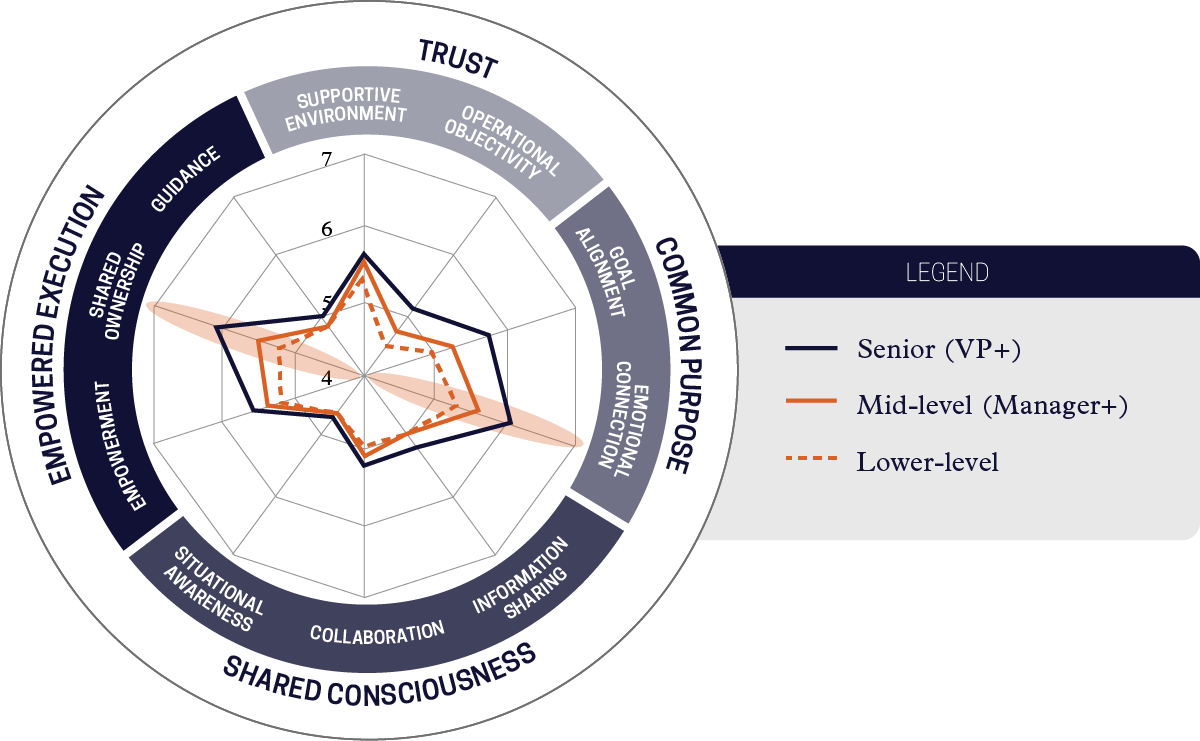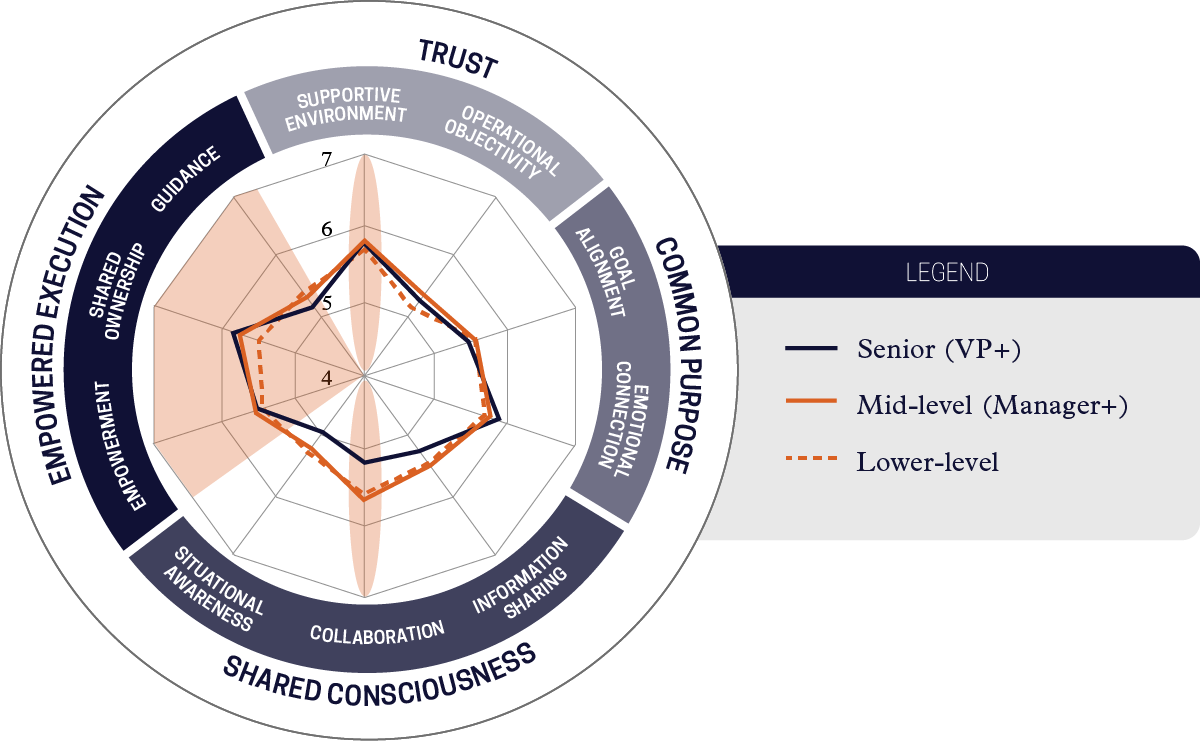In order to maintain a healthy workplace culture and retain key talent, leaders must understand the different factors that influence motivation for the organization.
Over the past pandemic year, leaders were charged with making difficult and unprecedented decisions that impacted their businesses and workforces. The complete effect of COVID-19 on organizations remains to be seen, but high employee turnover has become a trend that employers must continue to address with urgency. Companies have invested significant time and funding into creating the “right” conditions for a return-to-office, but voluntary turnover is still increasing and predicted to hit 35% by 2023 as employees seek new post-pandemic opportunities.
For employers, the cost of employee turnover is high and has a significant impact on a company’s performance. Motivating and retaining your team cannot be a one-size-fits-all tactic, but rather a tailored process of communicating and understanding what matters most to the frontlines of your organization.
Using our database of clients, we have identified the leading predictors of motivation for executives and frontline contributors. We additionally identified how predictors of motivation differ at various levels of the organization. By leveraging these insights for improving employee and team motivation, leaders can cultivate new talent, sustain team productivity, and retain their workforces to prevent turnover before it happens.
Despite being typically concentrated at the top, feelings of ownership are important for inspiring motivation at all levels of an organization.

Figure 1: Based in our analysis of thirty-four cross-industry clients, higher Shared Ownership scores are connected with stronger Emotional Connection to the organization as highlighted by each of the three levels.
Traditionally, executives steer the development of strategies that impact the direction of the organization, while lower-level employees are very rarely involved in decisions that dictate the future of their company. However, our analysis found that employees at all levels are more motivated to excel at their jobs when they have a sense of ownership around the company’s mission and overall success. This means that company leaders can boost motivation by deliberately increasing opportunities for frontline contributors to share in the types of ownership typically reserved for executive-level employees.
For example, McChrystal Group partnered with a higher education foundation that was challenged with explicitly connecting individual’s job roles with the organization’s purpose. To unleash motivation across the foundation's workforce, the organization’s leaders needed to give direct attention to its employees and their valued contributions in the success of the mission. By creating an understanding of how employees could build on core strategic pillars, uphold the organization’s values, and where appropriate, take decisive action, the foundation’s workforce felt accountable and empowered to execute against their goals, increasing the overall motivation of the team.
Developing a strong mission statement is not enough to create the buy-in necessary to motivate your teams. As the organization continues to grow and new teams mature, so too does the need for strategic communication among internal stakeholders, including those at lower levels of the organization. Leaders need to be able to clarify the role each team will play in executing the strategy. Ensuring critical constituents are involved in developing, aligned to, and invested in the outcomes will foster a sense of motivation when all levels understand where they fit into the plan.
Establishing a networked practice for collecting feedback is another way to illuminate the voices of your team and increase ownership of the plan. McChrystal Group leverages bottom-up refinement, a process that occurs when input from lower levels provides clarity in driving company objectives. By continuously seeking out opportunities to refine and reaffirm the strategy from the bottom-up, ownership is pushed down to the lowest appropriate level to allow execution at the speed of the environment.
Executive accessibility is a motivating factor for employee engagement and improved job performance.
When looking at additional drivers of motivation, certain factors are more predictive of motivation at some levels of the organization than others. For frontline contributors, we found the perception of sufficient access to senior leadership was associated with 72% higher motivation to excel at work, whereas for executive-level employees this access was associated with only 41% higher motivation. Frontline contributors and junior teammates are actively seeking recognition and purposeful engagement with managers and senior levels. Leaders who can dedicate time to serve as the connectors between junior employees and the strategy of the organization will be more impactful in motivating their workforces, increasing focus on the needs of the broader team, and developing a sense of common purpose.
McChrystal Group worked with a Fortune 100 oil & gas company to adjust its structure to a cross-functional model to support geographically dispersed teams who were historically siloed from the organization’s mid- and top-level management. Leadership recognized the rapidly changing world necessitates maximizing resources and empowering frontline teammates to make well-informed, quick decisions. The company developed and aligned behind a common mission, with supporting objectives and strategies, and created a Keystone Forum to equip teammates with the most up-to-date information and context from the leaders who had the most relevant information.
Cultivating vertical alignment between leadership and the frontlines will provide leaders with an understanding of how the organization internalizes the mission and underlying priorities, providing them with the tools to unlock higher productivity and address regrettable attrition with accuracy.
To increase motivation within the C-Suite, company leaders must focus on increasing opportunities for input and empowered decision-making among their top-level teams.
From our database experience, C-suite and business president level executives felt motivated in empowering and learning organizations. More specifically, when presented the same statement of “When I think about where our company will be in 5 years, I feel motivated to excel at my job”, the two most influential responses about motivation in the C-Suite were “Leadership respects the decisions that my team makes” and “Leadership is receptive to new ways of doing business.”

Figure 2: Executives who score highly across Empowered Execution indicators also demonstrate stronger scoring in Collaboration and Supportive Environment areas highlighted.
The C-Suite has always been responsible for keeping their teams on track and moving in the direction of the organization’s mission and purpose. But these leaders also need to feel like they have a voice, in addition to having a seat at the table. To build, motivate, and maintain an effective executive cohort, leadership must invest in and foster an inclusive and team-centric environment at the top, where rules and norms are apparent and agreed upon. To create a successful executive team culture, leaders must establish psychological safety.
Conclusion
Motivating your organization to be a consistently productive and engaged workplace environment can be difficult, but is a critical piece of any successful organization. In designing their approach, leaders should not assume that the goals and needs of frontline contributors match those of the C-Suite, and vice versa. Ultimately, frontline contributors are crucial for seamless operations and are responsible for driving a large portion of the culture. Leaders must engage the frontlines directly through bottom-up feedback and opportunities for greater connectivity to ensure that all voices are heard when making decisions that dictate the future of the organization. As individuals progress from the frontlines to positions of leadership, motivating tactics that shift must be accounted for. While top-level leaders are driving forces of any organization, they also need to be motivated through deliberate methods, such as setting clear ownership lines for empowerment, and enabling channels for open and honest discourse. Motivation is never static, and one size does not fit all: iterate with your teams as we continue to navigate a new era of workplace norms.




